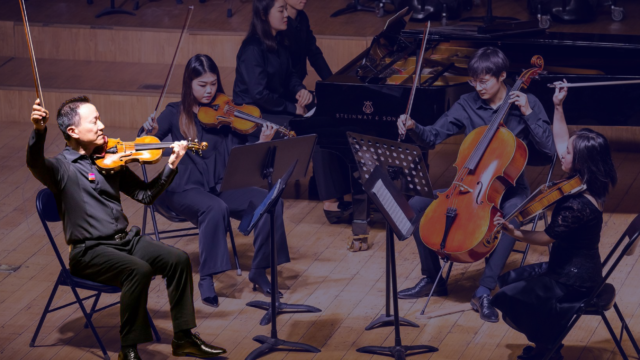Power of Inclusion – 10 Characteristics of Inclusive Orchestras

The Inclusion Index results show that many U.S. orchestras are making real progress in building more positive, inclusive organizational cultures.
At the same time, others have yet to establish the kind of inclusive environment that fully supports their goals. As in the broader arts and culture sector1, this work can be especially challenging for larger-budget organizations with larger staff teams.
Our research shows that those musicians and staff reporting an inclusive organizational culture typically work for orchestras with some of the following characteristics:
1. A strong sense of internal community, with musicians, staff, and board acting as one toward the mission
- A commitment to inclusion and belonging articulated in a strategic plan or values statement, holding the institution accountable
- Board leadership support for a welcoming community, and participation in the life of the orchestra
- Alignment of internal and external identities, rooting inclusive culture in an orchestra’s role in its community
- Gatherings of orchestra, staff, and board in settings both business and social
- Engagement and onboarding for new staff and musicians to pass along the orchestra’s workplace culture—especially for those whose backgrounds might make them feel different
2. Safety in sharing thoughts, ideas, and disagreements
- Forums for dialogue about institutional issues, both public and through private channels, enabling people to voice concerns in ways that are comfortable for them
- Role modeling, at every level of management and by the music director, the commitment to transparency and psychological safety
3. Care for musicians and staff that makes each person feel individually seen and supported
- A history of caring, which for some orchestras has meant maintaining employment and insurance straight through the pandemic
- Leadership presence at rehearsals, performances, community events, and throughout the office
- Flexibility with work hours to optimize satisfaction and retention among mission-driven staff
- Contractual services for training, discussion of institutional issues, and content of interest to musicians’ personal and professional lives
4. Collaboration across functions
- Working groups tackling big questions, mixing musicians, staff, and board
- Sharing the challenges and processes of musicians and various staff through written channels and in-person activities
5. Professional advancement opportunities for staff and musicians
- Regular performance reviews for staff that provide clear expectations and guide towards goals for personal growth
- Financial support for staff members’ professional development and mentoring toward expanded roles
- Flexibility for musicians with external performance opportunities
6. Respect and recognition for musicians and staff
- Celebration of special accomplishments—and not only for department heads or section leaders—like solos, community work, or successful revenue generation
- Events to recognize important anniversaries and retirements for staff as well as orchestra
- Respectful audition and tenure communications and procedures built on clear communication and a supportive experience
7. Accountability at all levels
- Orientation or training for staff and for orchestra section leaders that inculcates the orchestra’s commitment to a welcoming, respectful culture, and makes training for organizational skills available
- Dealing with interpersonal and workplace issues quickly and with compassion, allowing all to be heard, and heading off larger problems
8. Communication to overcome silos and promote transparency
- Regular written communications that make staff and musicians aware of the how and the why as well as the what, along with news both good and not-so-good
9. Empowerment and agency for musicians and staff
- Opportunities for musicians to provide programing ideas, create or participate in community initiatives, or see their input realized in other meaningful ways
- Openness to staff input on how goals can be reached, and how administrative tasks are carried out
10. Persistence in all of these practices, and consistency across strategies, tactics, and tools, to allow a distinctive and self-sustaining culture and institutional pride to evolve
- SSMU DataArts (2025): THE POWER OF INCLUSION Unlocking Workforce Well-Being in Arts and Culture (PDF) a and their support is key to sustaining progress in the longer term.
Photo: Monthly Chipotle day at the Charlotte Symphony Orchestra, where staff members gather to eat lunch together. Photo courtesy of the Charlotte Symphony Orchestra.
Related
-
Learn | Equity, Diversity & Inclusion
Discover the Power of Inclusion in Orchestra Culture
-
Learn | Equity, Diversity & Inclusion Member-only Content
Discover the Power of Inclusion in Orchestra Culture
-
Learn | Equity, Diversity & Inclusion
Catalyst Guide: The Power of Inclusion
Become a member
Thank you for your interest in the League of American Orchestras! We are dedicated to advancing the orchestral experience for all.
Join Now

